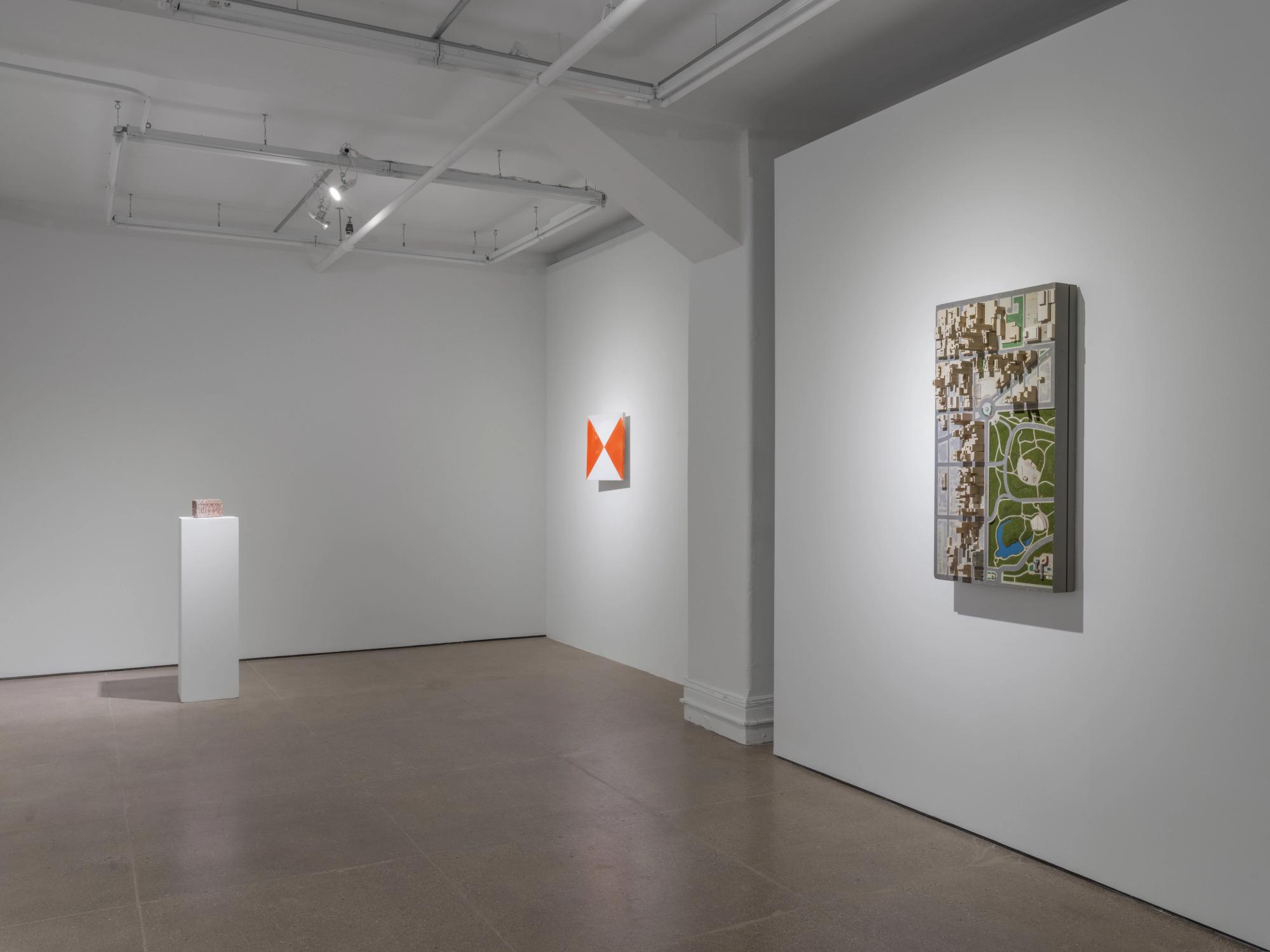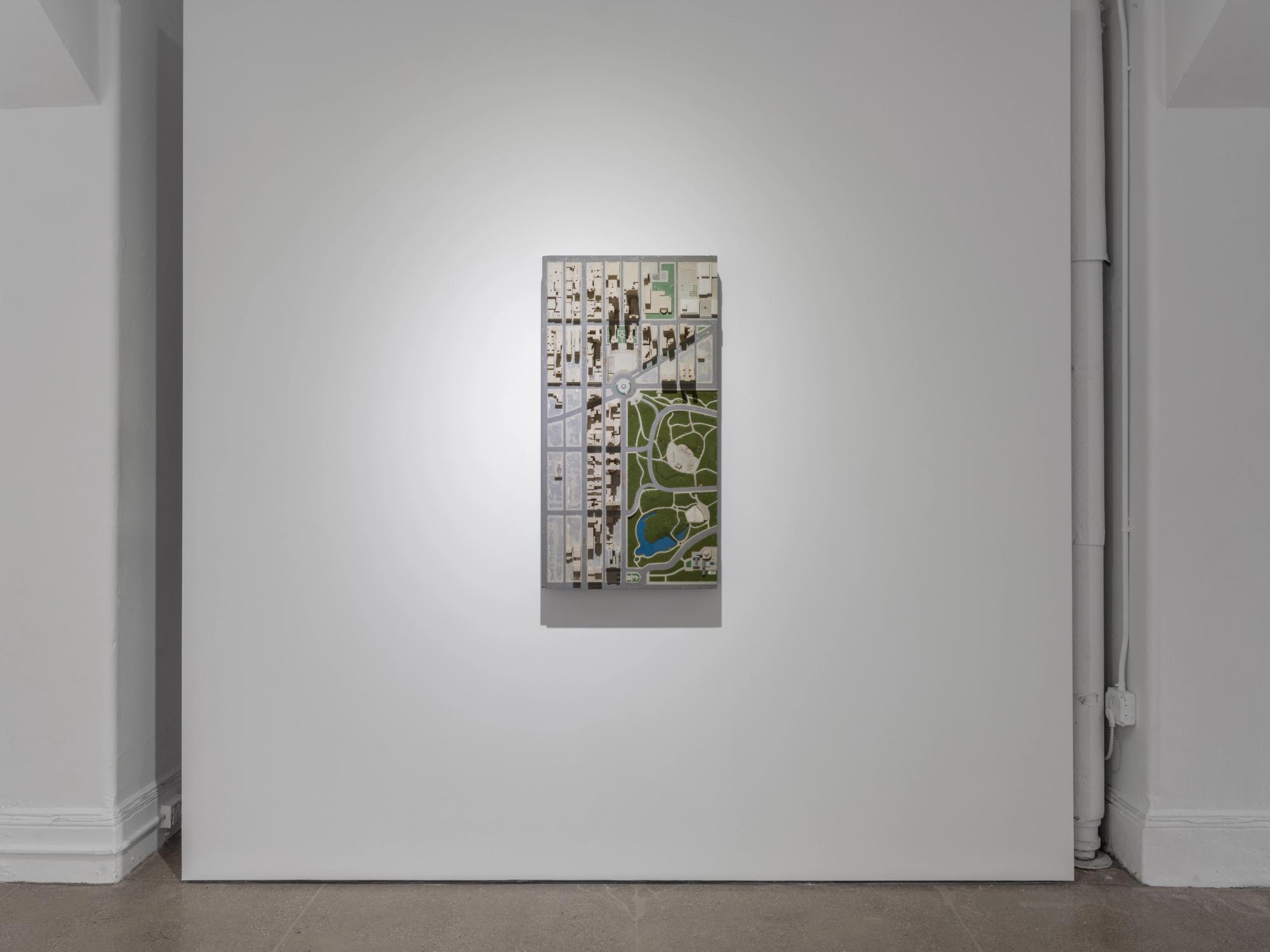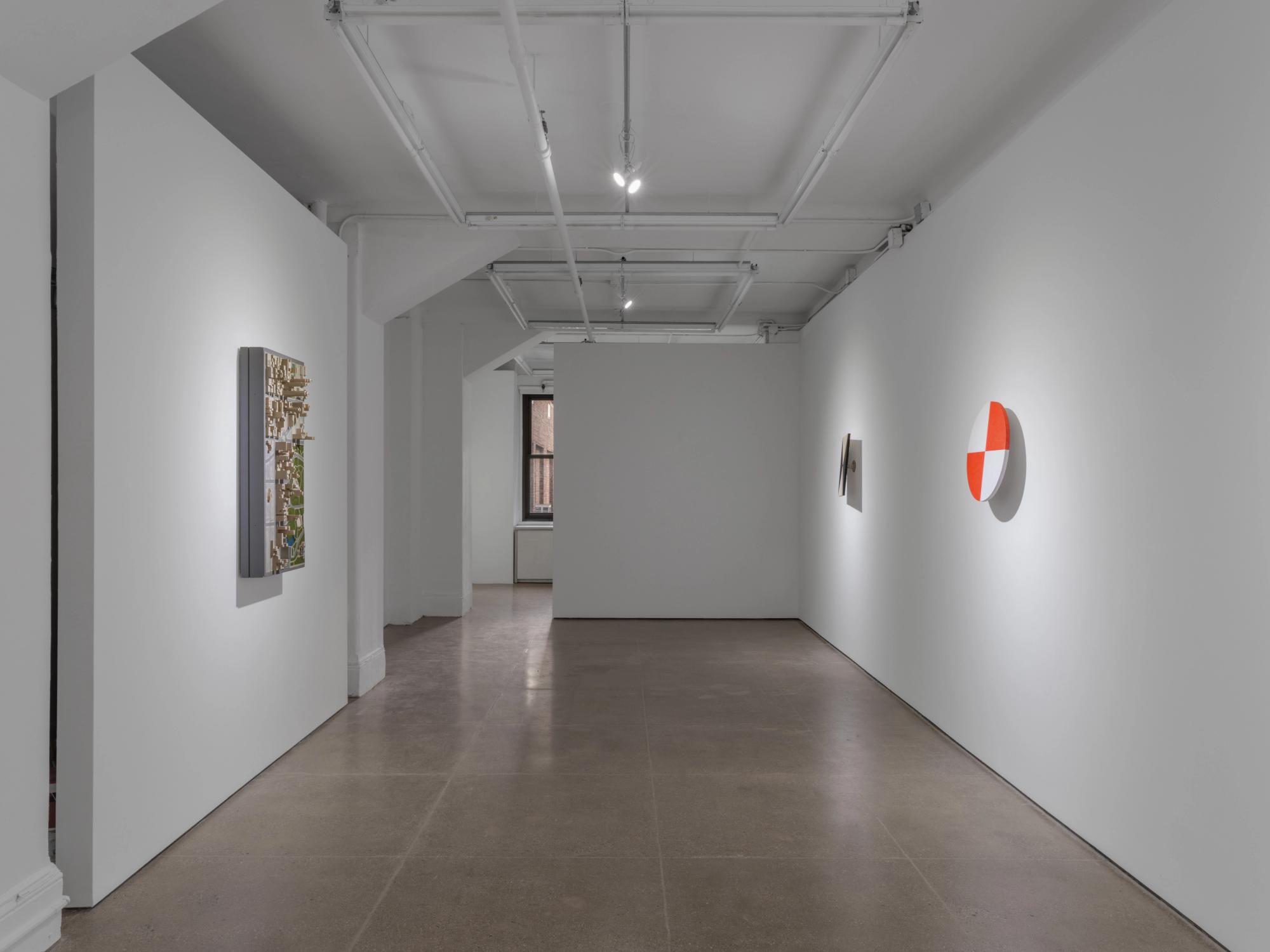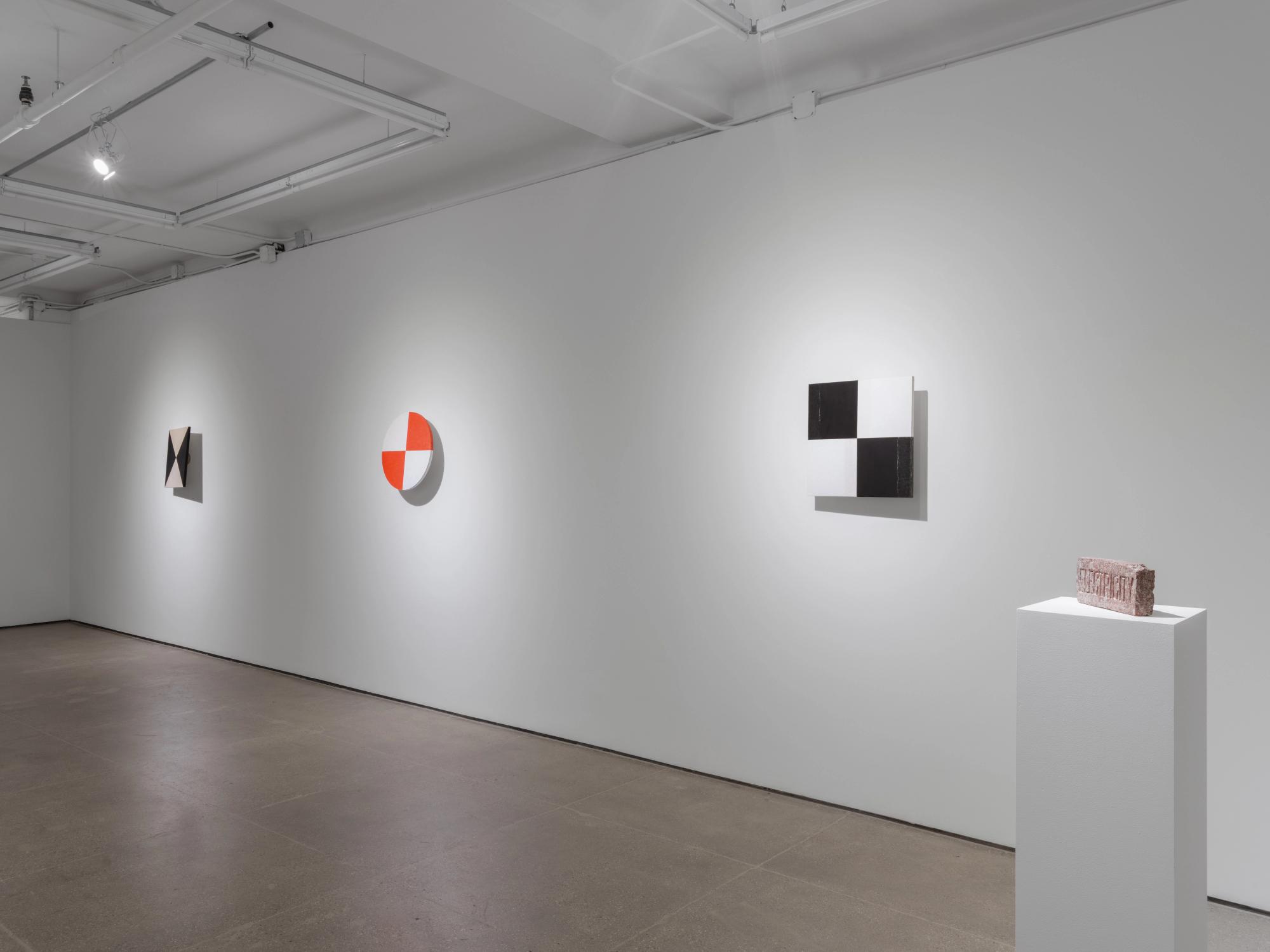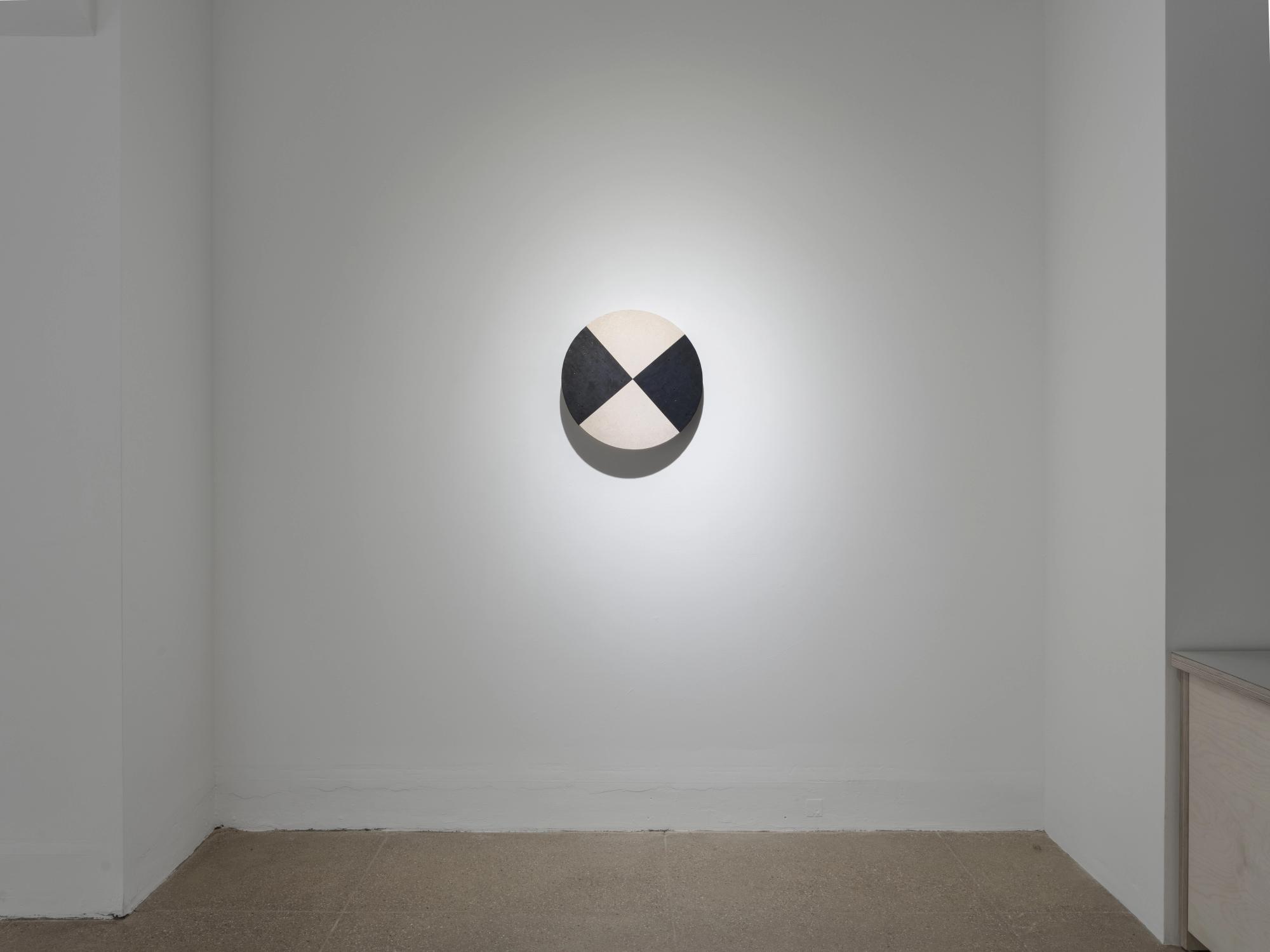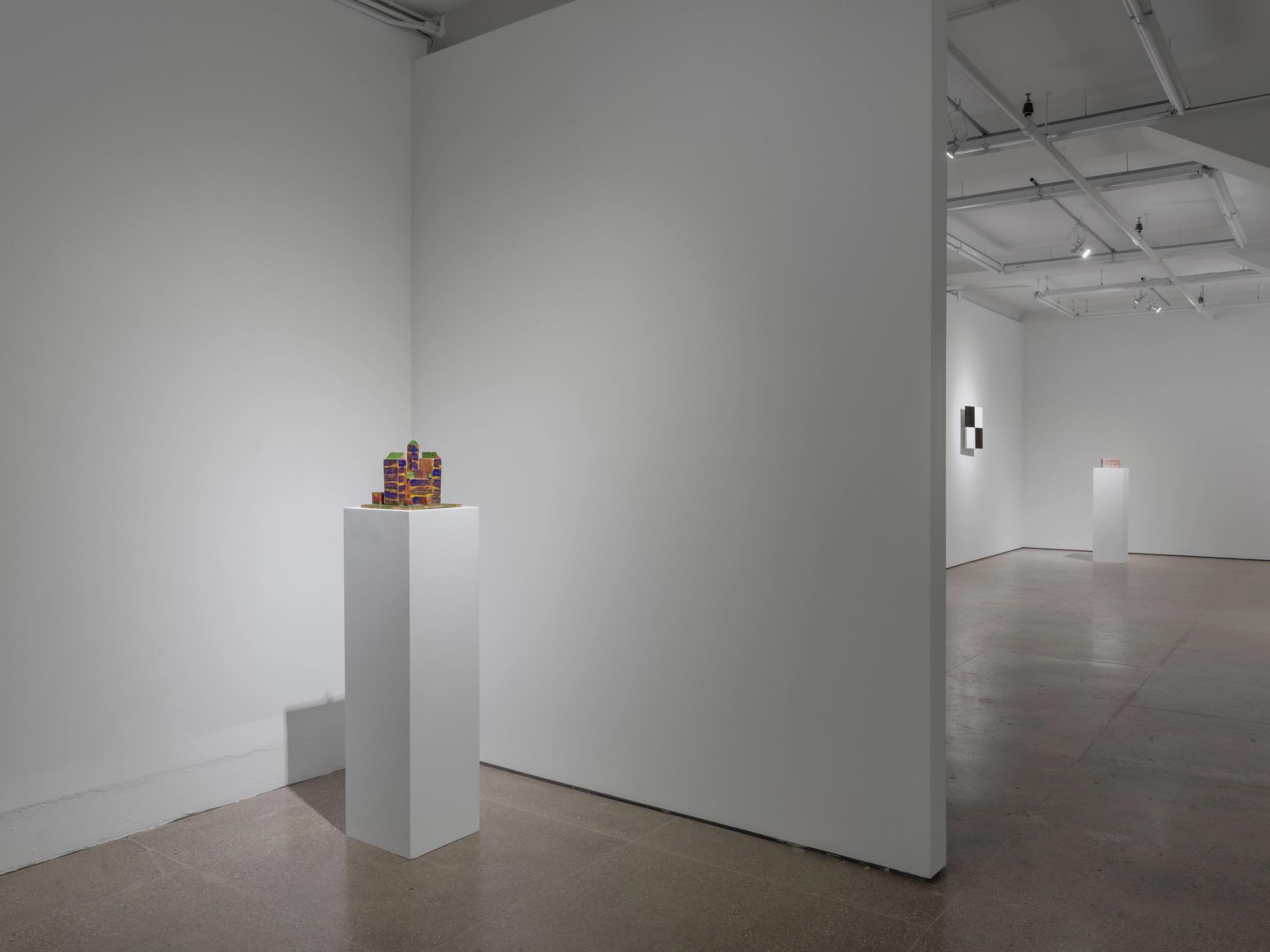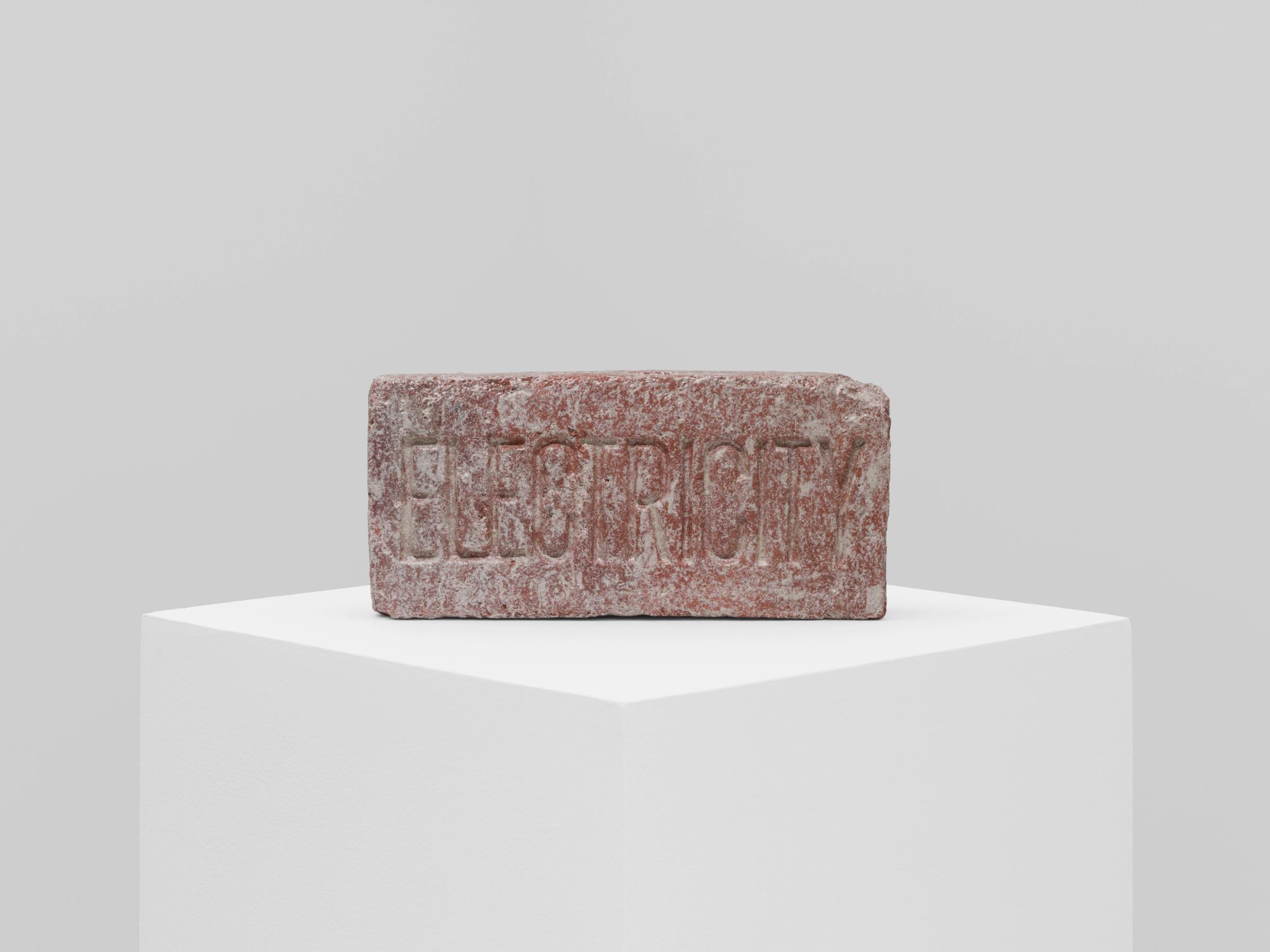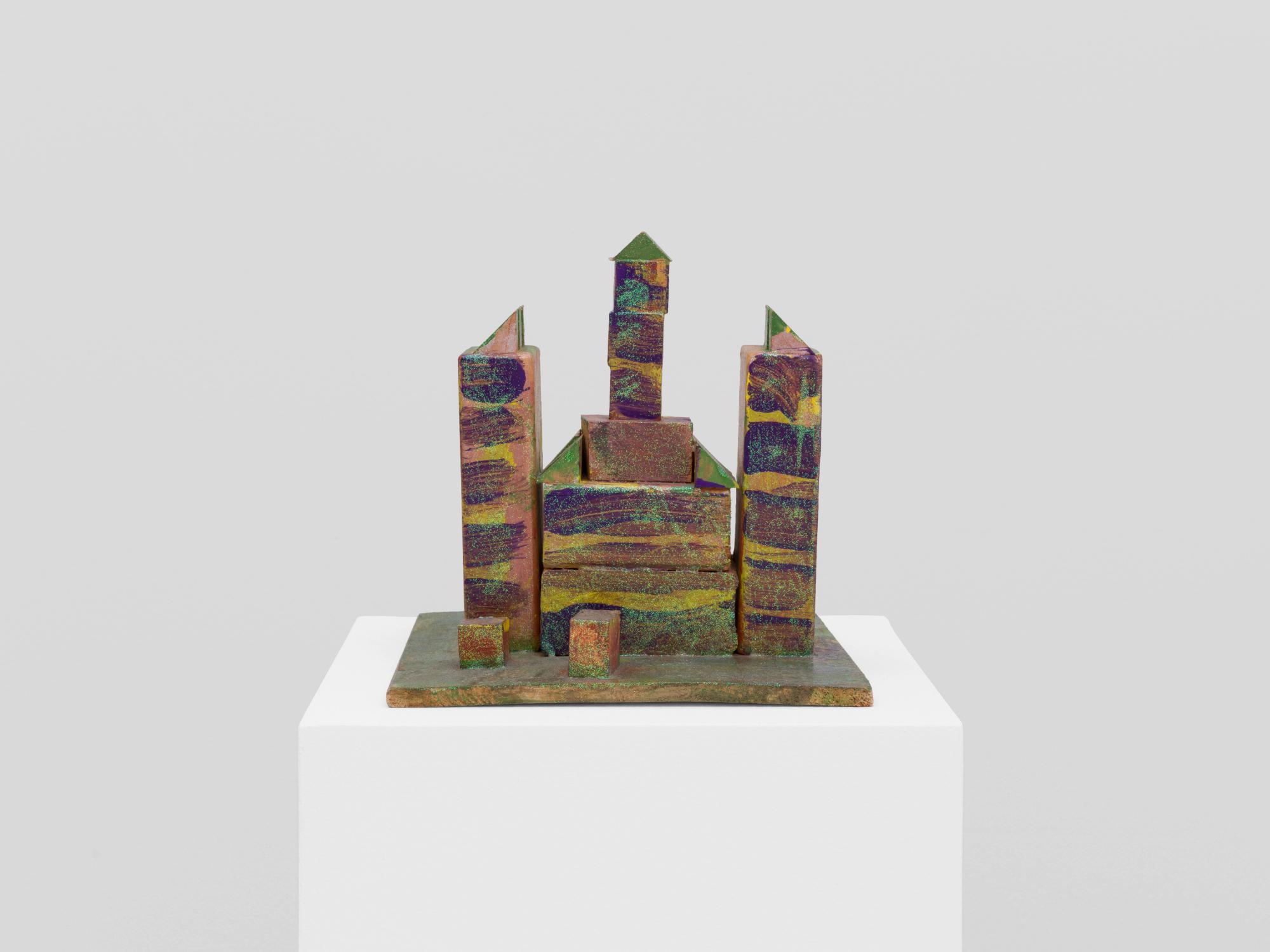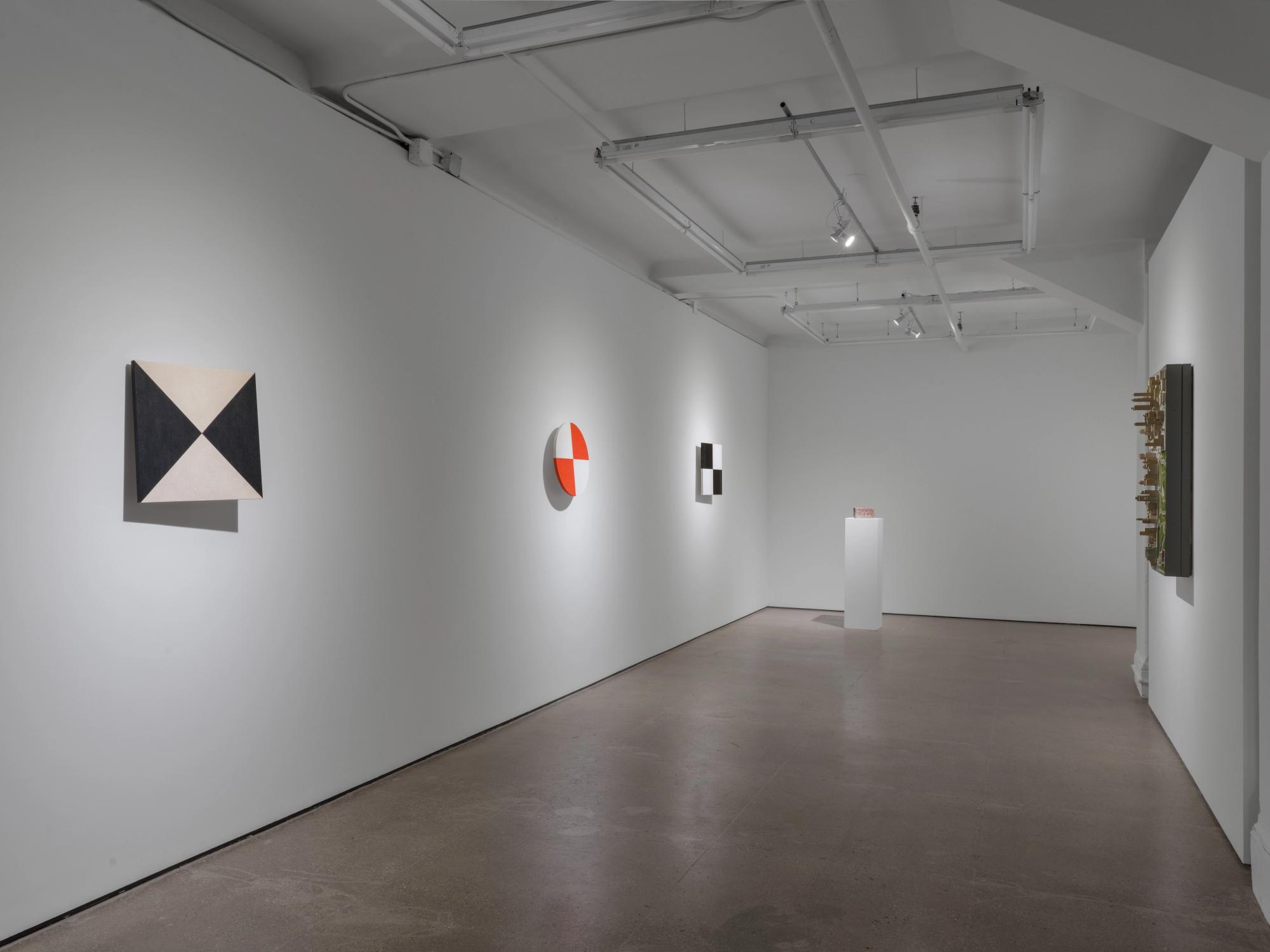
Current
Nick Relph
A Point of Light Left a Witness Post
Through December 21, 2025
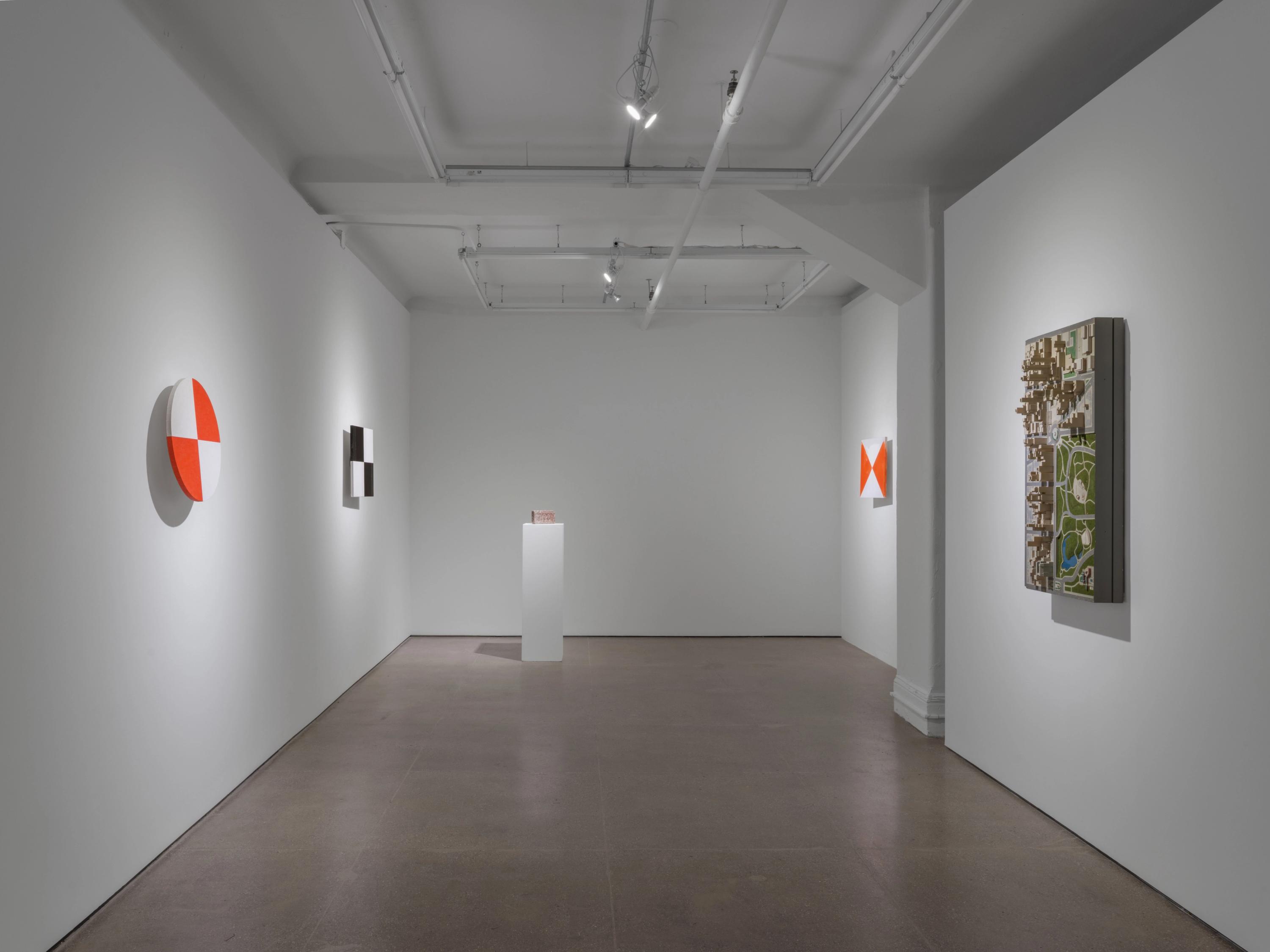
The basic unit in surveying is the point. All surveying measurements are made between points that have been located or established.
—USDA National Engineering Handbook
Gordon Robichaux is pleased to present A Point of Light Left a Witness Post, Nick Relph’s second solo exhibition at the gallery. The installation includes a group of wall-mounted panel works incorporating plywood, molded paper, and mica; an architectural model; a masonry brick; and a sculpture created by the artist’s son.
The exhibition is anchored by five new Lusty Ghost works that resemble geometric targets. Each panel is an 18-inch circle or square comprised of four identical units (four quarter-circles joined into a circle; four triangles or squares joined into a square) cut from ½-inch plywood and covered with black or white washi paper, which Relph wet and molded around the wood. The modular shapes within the panels are organized with alternating colors of paper, some stained with washes of white or orange ink, which lend each Lusty Ghost a “checkerboard” pattern.
Installed around the room, each of the Lusty Ghosts is attached to a swivel mount that holds the work a few inches off the wall and pivots, so the panel can be tilted toward a light source. The surfaces of the panels reveal a subtle iridescence—the visual effect of biotite and muscovite mica, which Relph extracted around New York City. These minerals have varied applications in industry and construction, among them, electrical and thermal insulation, sound dampening, fire resistance, or cosmetics. In his artworks, Relph applied the mica to paper with a Funori binder made from algae.
The panel works emerge from Relph’s interest in geodetic pattern images used by surveyors to measure, map, and demarcate the landscape, whether on the ground or using drones for aerial scanning. He explains:
I’ve seen these “target” or “control point” images around for a while. As I understand it, they’re designed to be scanned and recorded as fixed positions, which can mark and measure distances using sophisticated instruments. They’re at once unknown—indicative of a process most of us know nothing about—and, in their own way, quite formally striking. They’re usually just printed out on a Xerox machine, so there’s a weird dissonance between the fancy equipment and the shitty prints.
Alongside the Lusty Ghosts, Relph has installed three sculptures. A shabby model of a section of midtown Manhattan created for the firm Skidmore, Owings & Merrill is presented vertically on one wall, the axis of the landscape turned ninety degrees. Nearby, a masonry brick inscribed with the word “ELECTRICITY” sits on a pedestal. The artist’s father found the brick—which was originally used to mark the location of electrical infrastructure—and kept it in his garden in South West London until Relph brought it to Brooklyn. Like the Lusty Ghosts, the surface of both the model and the brick are painted with mica. In the adjacent room, a sculpture created by the artist’s son, Clyde, is displayed on a pedestal near one of the target panels. The assemblage, which Clyde made in the fourth grade, is an arrangement of small wooden blocks that freely describe an architectonic landscape without the burden of specificity. The volumes are painted with broad strokes of color and dusted with fine glitter.
Install (13)

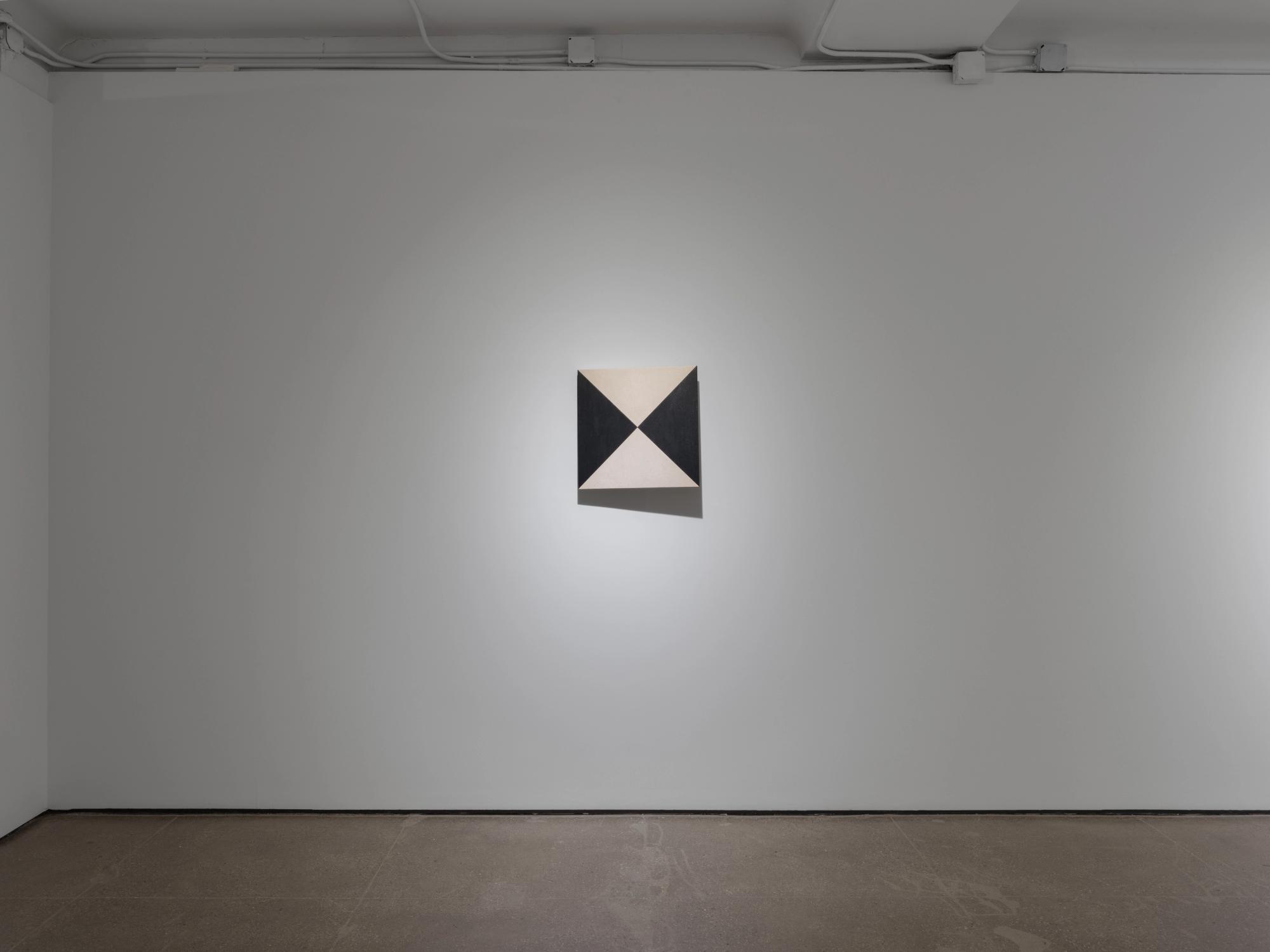

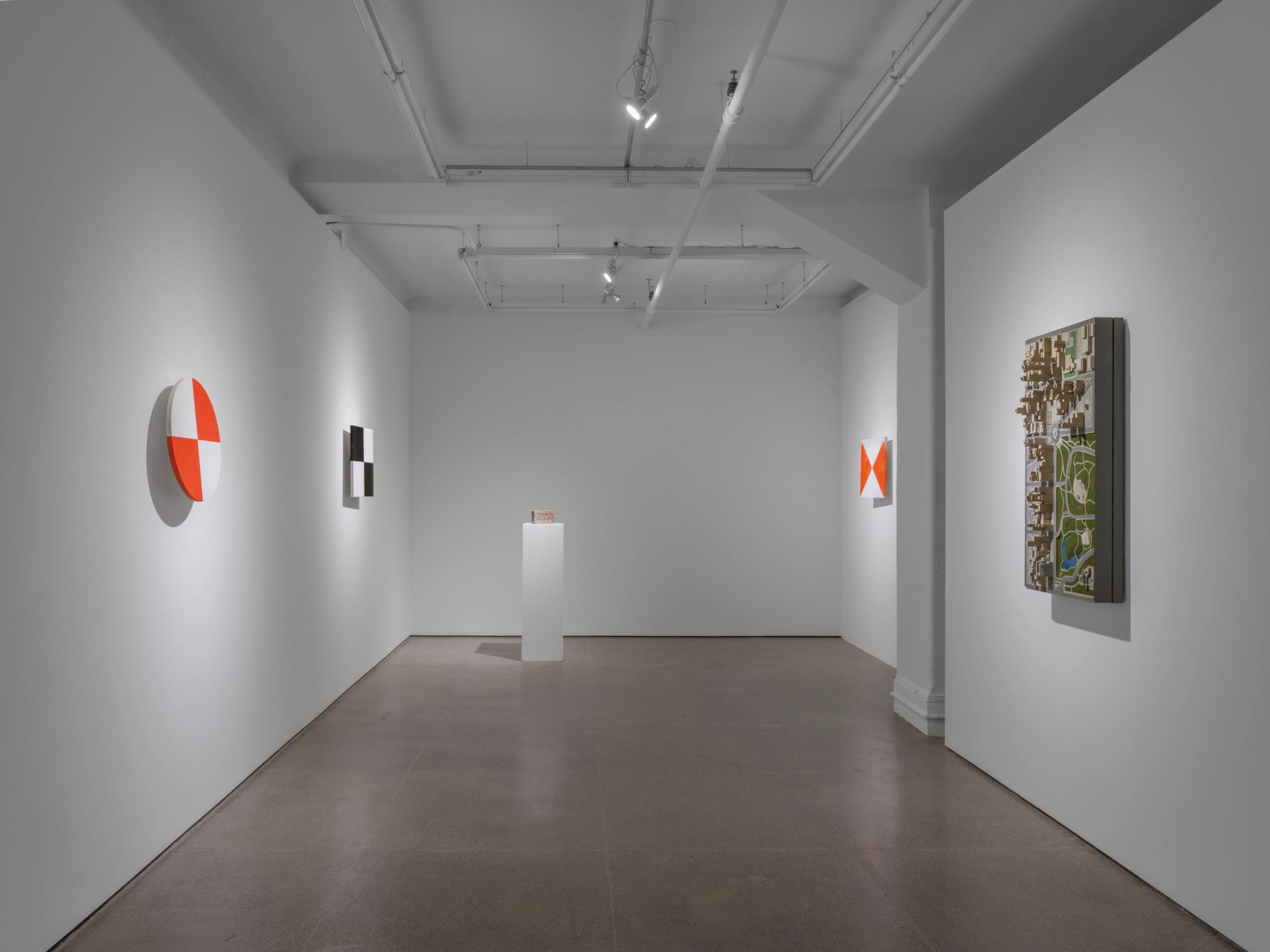

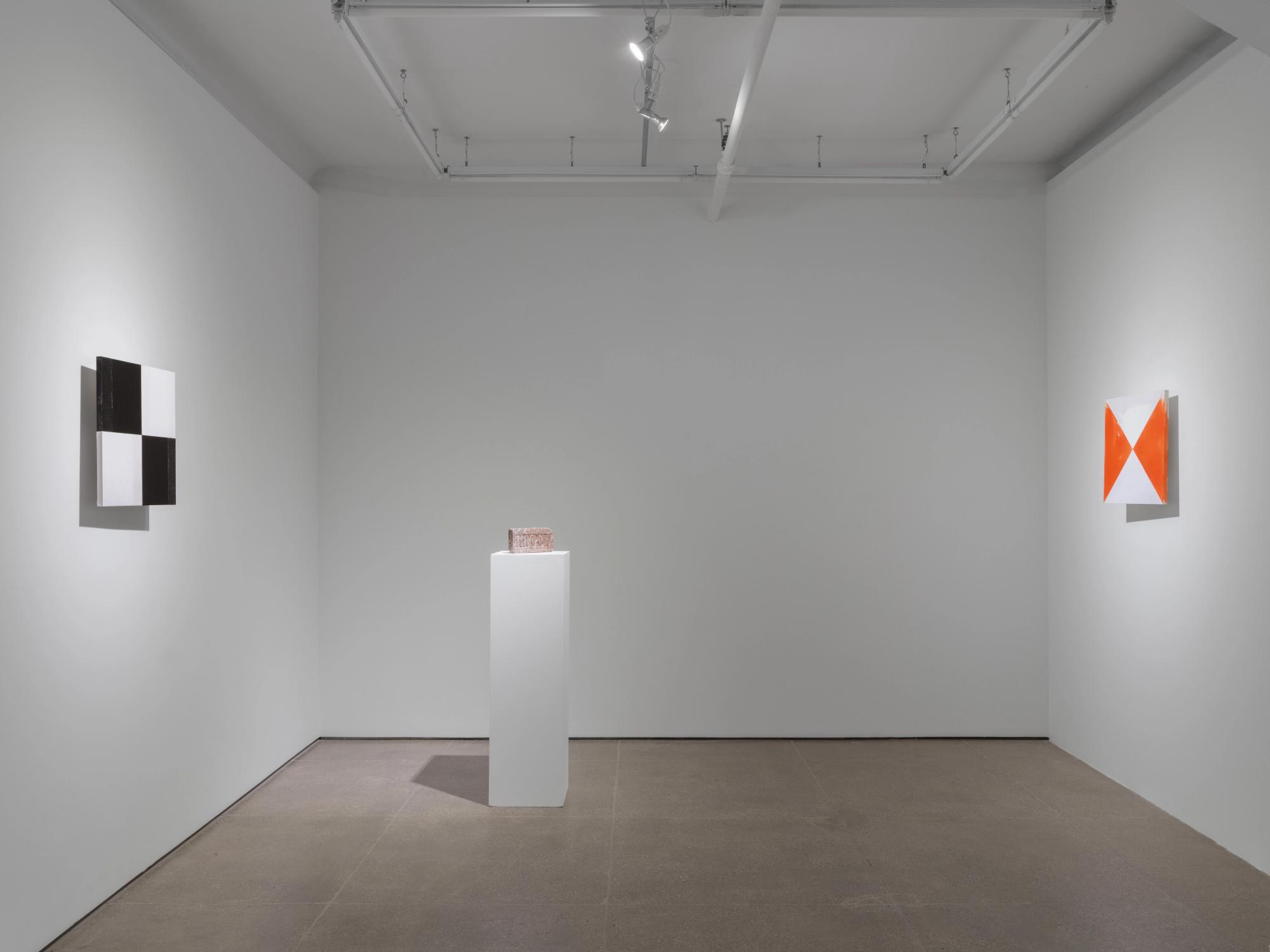
Nick Relph (b. 1979; London) lives in New York City. Solo exhibitions include Gordon Robichaux, New York (2022); Herald St, London (2023, 2020, 2016, 2010); Le Consortium, Dijon, France (2019); Bonner Kunstverein, Germany (2017); Gavin Brown’s Enterprise, New York (2016, 2013, 2010); Chisenhale, London, (2013); Overduin and Kite, Los Angeles (2010); STANDARD (Oslo) (2015, 2011); and Frieze Projects, Frieze Art Fair, London (2010).
Group exhibitions include The Gatherers, MoMA PS1, Queens, New York; Post-Capital: Art and the Economics of the Digital Age, Mudam Luxembourg – Musée d’Art Moderne Grand-Duc Jean, Luxembourg; Ups & Downs, STANDARD (Oslo), Norway; Fiction and Fabrication: Photography of Architecture after the Digital Turn, Museum of Art, Architecture and Technology, Lisbon, Portugal; Working/Not Working, CANADA, New York; Takashi Murakami’s Superflat Collection: From Shōhaku and Rosanjin to Anselm Kiefer, Yokohama Museum of Art, Japan; Greater New York, MoMA PS1, Queens, New York; Matt Connors. Nick Relph, Herald St, London; Tate St Ives, England; Lat. 41° 7’ N., Long. 72° 19’ W (curated by Bob Nickas), Martos Gallery, New York; Why Is Everything the Same? Works from the Collection of Anne Collier and Matthew Higgs, Shoot the Lobster, New York; Petals Surround Your Yellow Heart, Institute of Contemporary Art, Philadelphia; and How to Look at Everything, Common Guild, Glasgow, Scotland. Relph was a participating artist in ILLUMInations at the 54th Venice Biennale.
In 2021, Pre-Echo Press published Relph’s artist book, Eclipse Body & Soul Syntax, which was the subject of a feature in The New York Times.
Public collections include Le Consortium, Dijon, France; the Whitney Museum of American Art, New York; The Museum of Modern Art, New York; The National Museum of Contemporary Art, Oslo; Centre Pompidou, Paris; Tate Britain, London; Sammlung Goetz, Munich; and Arts Council Collection, United Kingdom.
Works
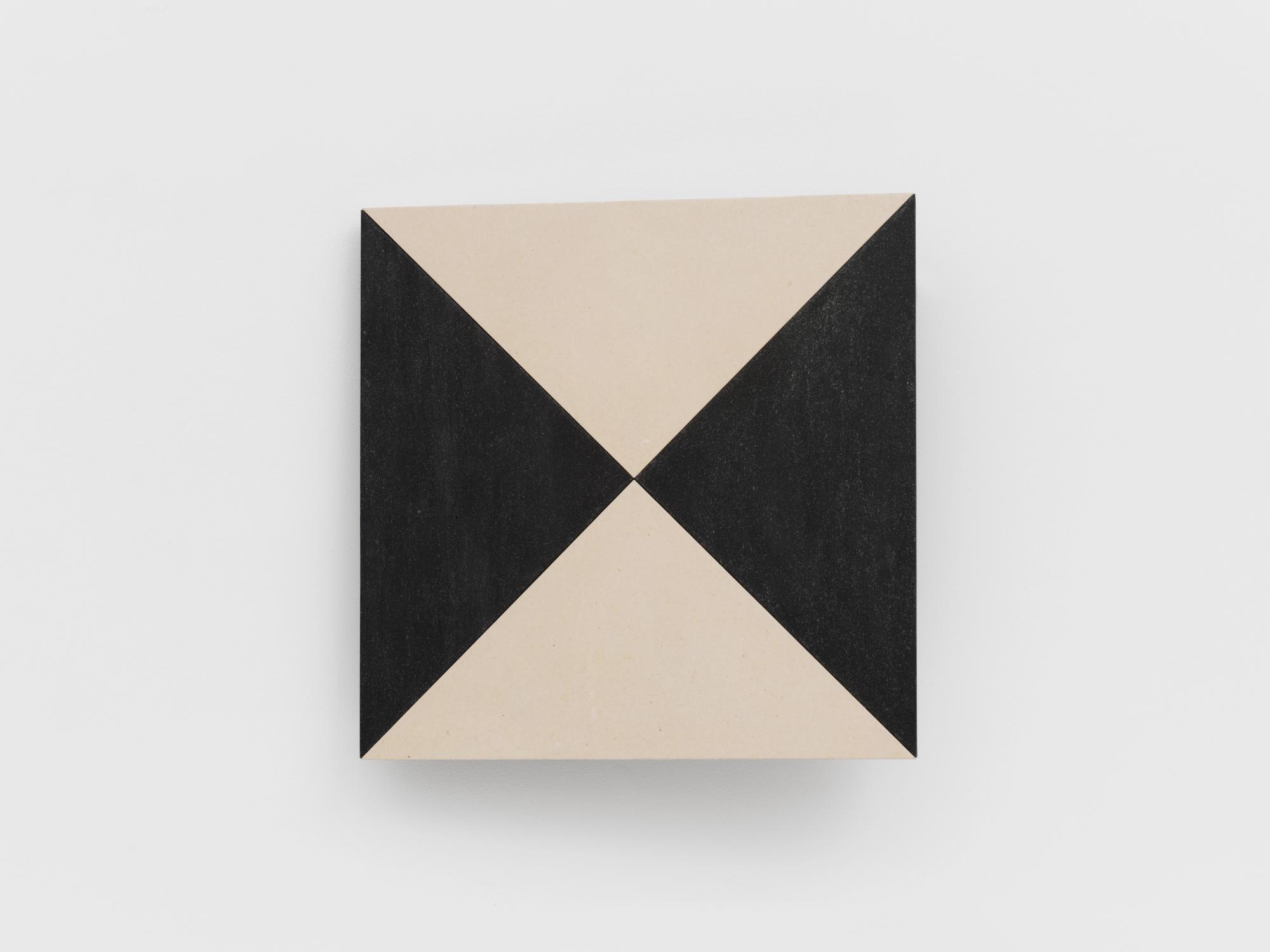
Lusty Ghost (59)
Plywood, paper, ink, muscovite mica, Funori, mount
18 x 18 inches
2025
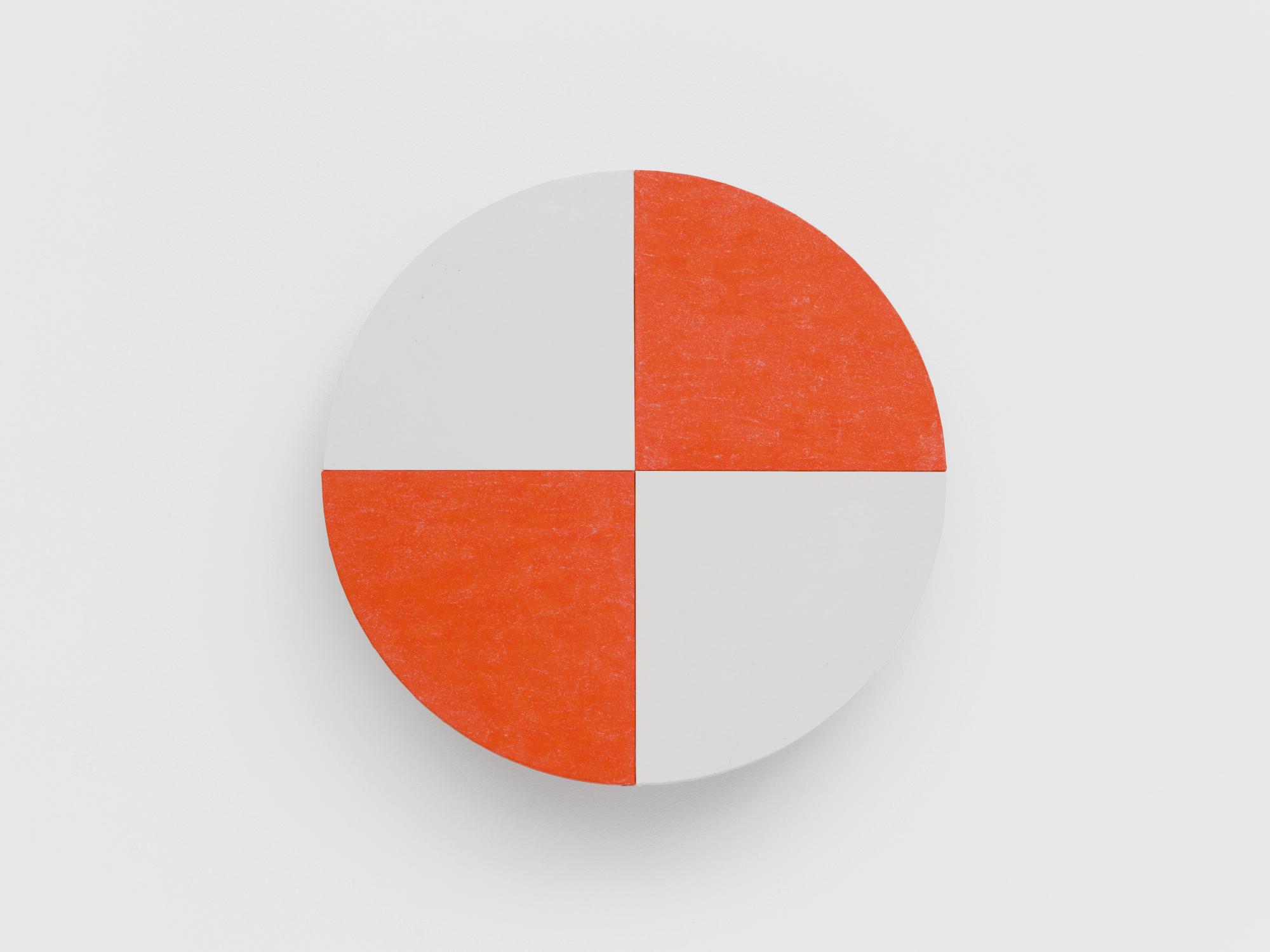
Lusty Ghost (63)
Plywood, paper, ink, muscovite mica, Funori, mount
18 x 18 inches
2025
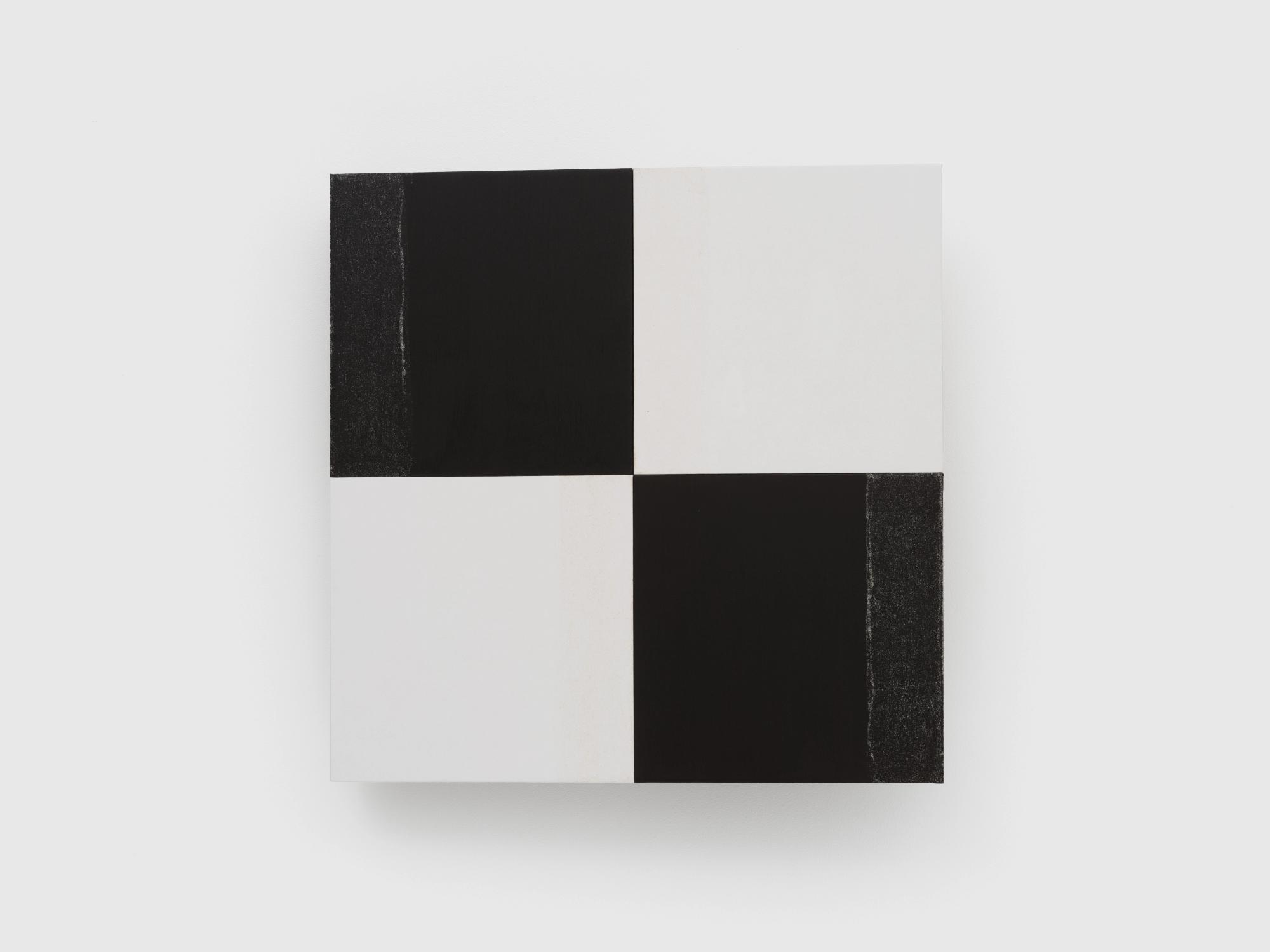
Lusty Ghost (62)
Plywood, paper, acrylic, muscovite mica, Funori, mount
18 x 18 inches
2025
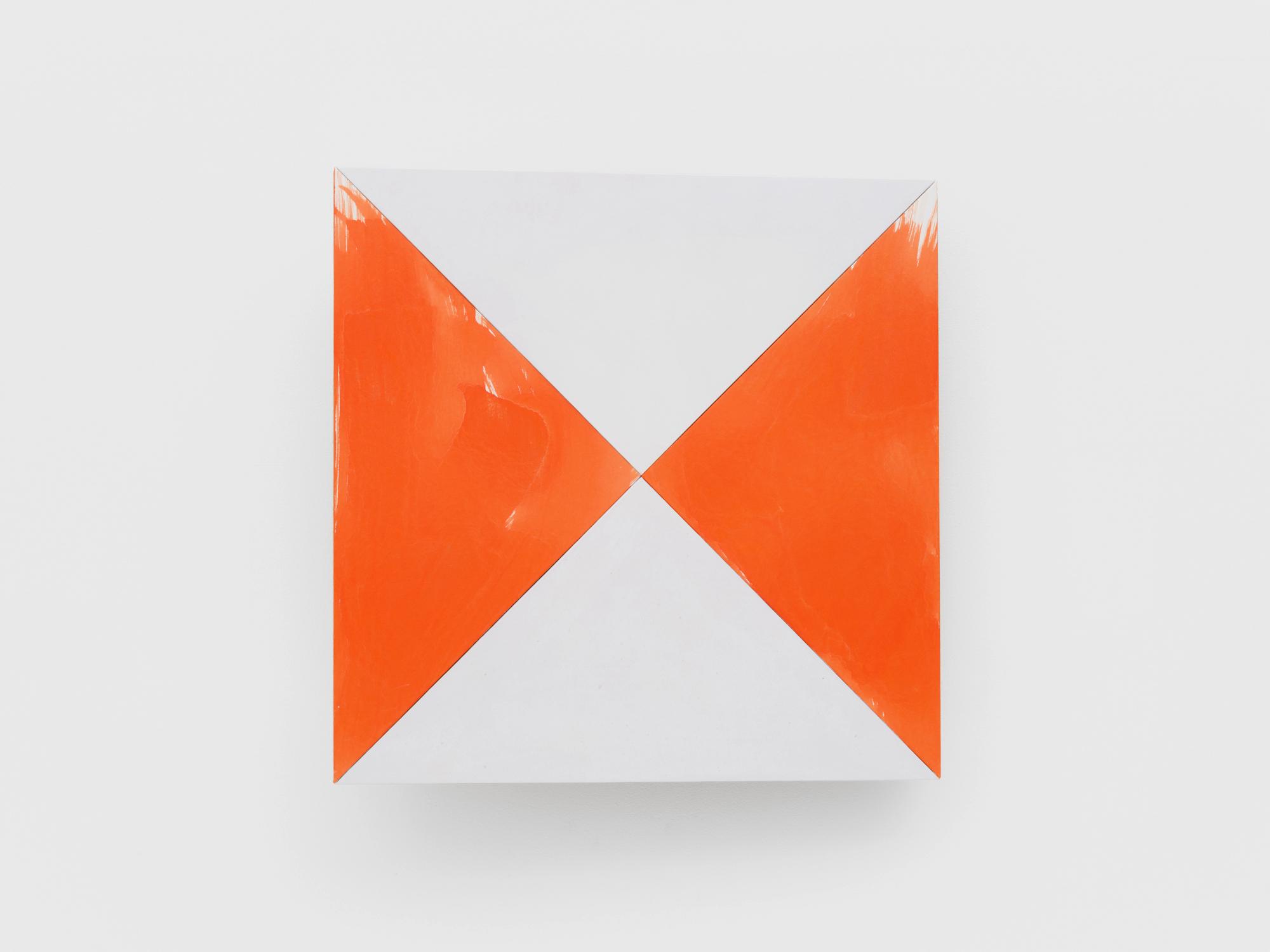
Lusty Ghost (61)
Plywood, paper, ink, muscovite mica, Funori, mount
18 x 18 inches
2025

Lusty Ghost (60)
Plywood, paper, ink, muscovite and biotite mica, Funori, mount
18 x 18 inches
2025

The Sun Always Wins
Found object, muscovite mica, Funori
39 x 20.5 x 9.25 inches
